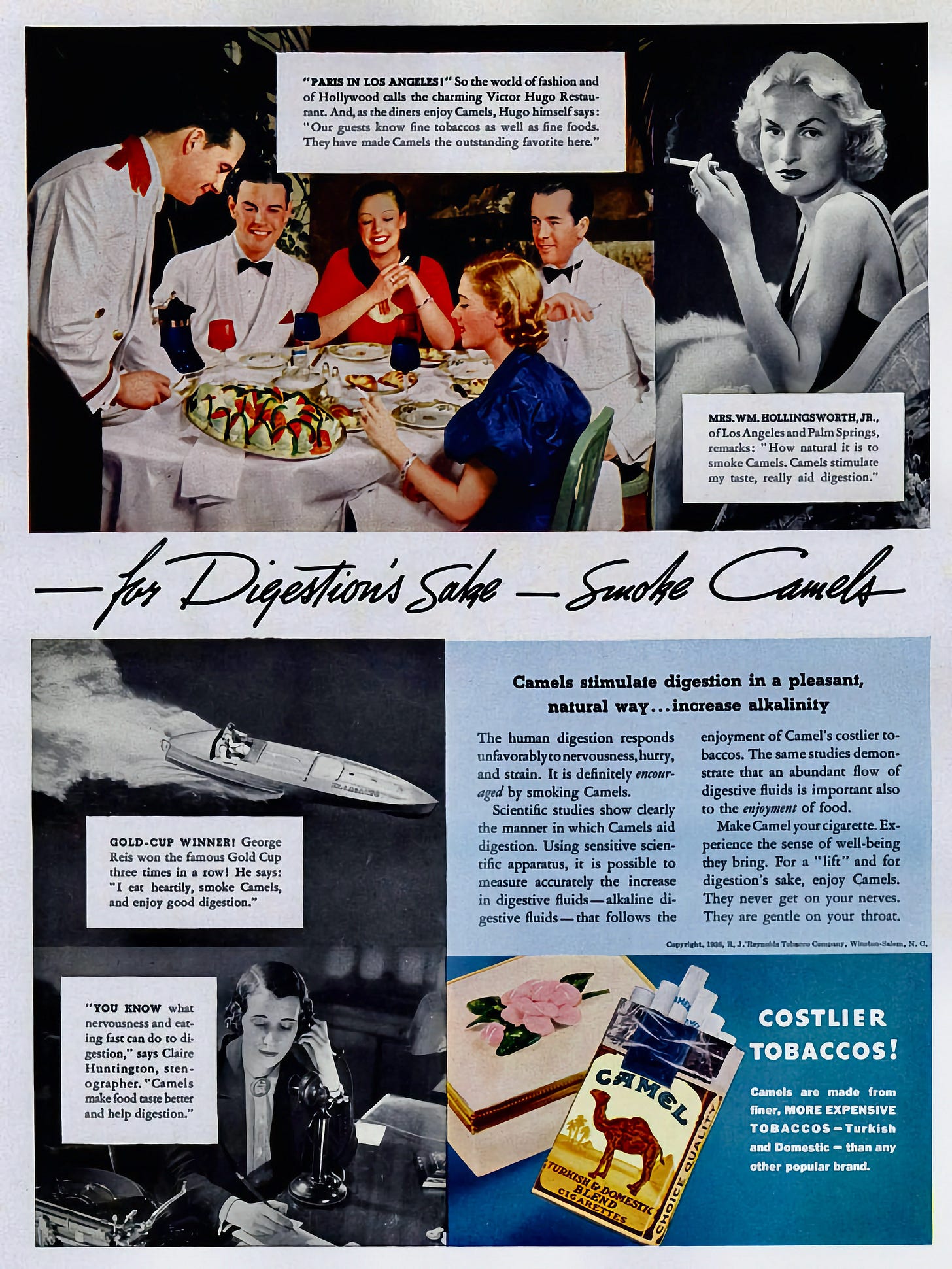
From 1936-1937, and then occasionally in 1938 and in 1939, Camel ran the “For your digestion’s sake, smoke Camels” campaign, which insisted that Camels helped speed digestion by increasing alkalinity – perhaps the strangest health claim in all of tobacco advertising history.
This campaign artfully blended the burgeoning fields of health and lifestyle marketing with the era’s glamour, targeting a demographic concerned with both sophistication and well-being.
Hollywood Glamour and High Society
The above advertisement features a glamorous dining scene, where a group of well-dressed individuals enjoy a meal at the prestigious Victor Hugo Restaurant in Los Angeles.
The endorsement from Hugo himself adds a touch of celebrity endorsement to the campaign, positioning Camel cigarettes as a choice for the elite and fashionable. This ad claims that smoking Camels enhances the enjoyment of fine foods and aids digestion—a perfect blend of luxury and pseudoscience.
Cowboy Endorsements
Not all Camel ads were focused on the urban elite. The campaign also tapped into the rugged individualism of the American cowboy. This advertisement features Fred McDaniel, a Texas cow puncher, who extols the virtues of smoking Camels after a long day of riding herd.
The rustic imagery and McDaniel’s hearty endorsement suggest that Camel cigarettes were not only for the city sophisticate but also for the hardworking, salt-of-the-earth American.
Pioneering Aviators and Socialites
Camel’s marketing strategy also included targeting adventurous women. This ad showcases Mrs. John W. Rockefeller Jr., a wealthy aviation enthusiast, juxtaposed with her socialite image.
By highlighting her piloting prowess and her preference for Camels, the ad cleverly appeals to both the adventurous spirit and the refined tastes of its audience.
The message is clear: whether you’re navigating the skies or hosting an elegant dinner party, Camels are the sophisticated choice.
Athletic Endorsements
The campaign didn’t stop at glamour and ruggedness. Athletes like Lenore Kight Wingard, a world record-holding swimmer, were also featured. This ad combines her athletic achievements with the dubious claim that Camels aid digestion, reinforcing the idea that these cigarettes were part of a healthy, active lifestyle.
The digestion advertisements employed an array of techniques, ranging from celebrity and athlete testimonial to youth appeal through a claim to “modernity.”
Claims like “They never get on your nerves” and “They are gentle on your throat” implied that other cigarettes produced these negative side effects, but that Camels were different.
Camel claimed to have based its digestion “facts” on studies conducted by Dr. A.L. Winsor of the Graduate School of Education at Cornell University. By 1951, the Federal Trade Commission (FTC) issued a cease-and-desist order prohibiting R.J. Reynolds from portraying Camels as aiding “digestion in any respect”
In the same FTC report, the FTC ruled that “smoking cannot be considered under any circumstances as beneficial to any of the bodily systems.” Considering that the digestion advertisements hadn’t run for over a decade, the FTC mandate might be seen as too little too late.
Source and more advertisements: Stanford ~ Research into the Impact of Tobacco Advertising
More fun ads for dangerous products?
The Fun Side of DDT (1947)
DDT is good for me-e-e! That was the slogan of a advertisement for a pesticide that was hailed as a miracle of modern science. This ad appeared in Time Magazine, June 30, 1947. DDT was marketed as a wonder product for farmers, gardeners, and homeowners. DDT could kill pests such as mosquitoes, flies, ants, aphids, and caterpillars w…

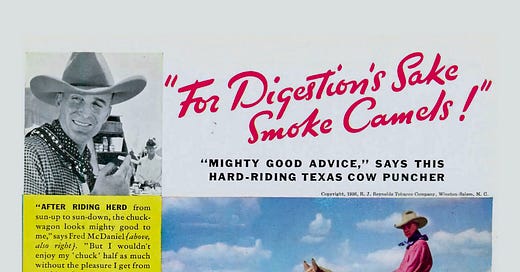


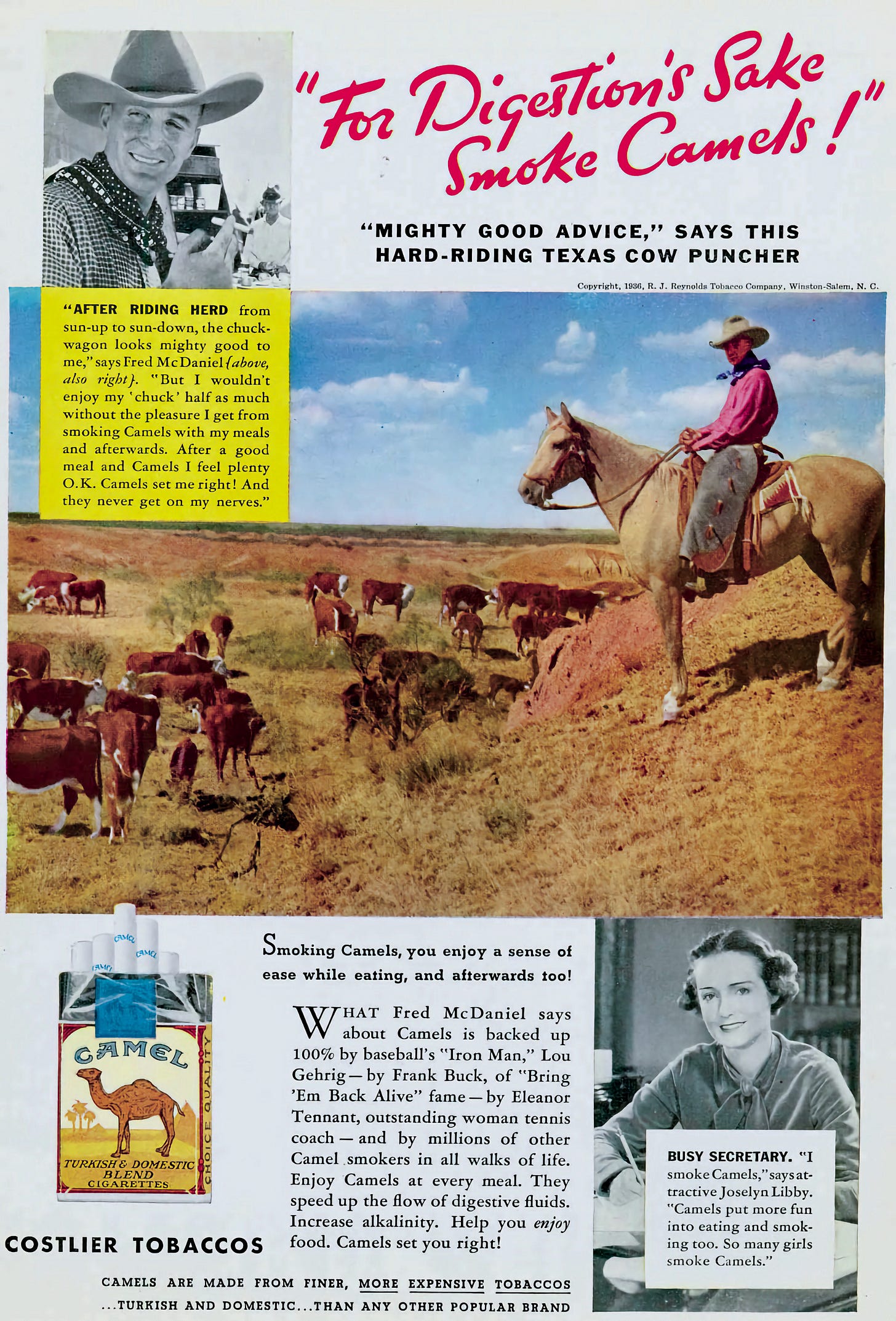
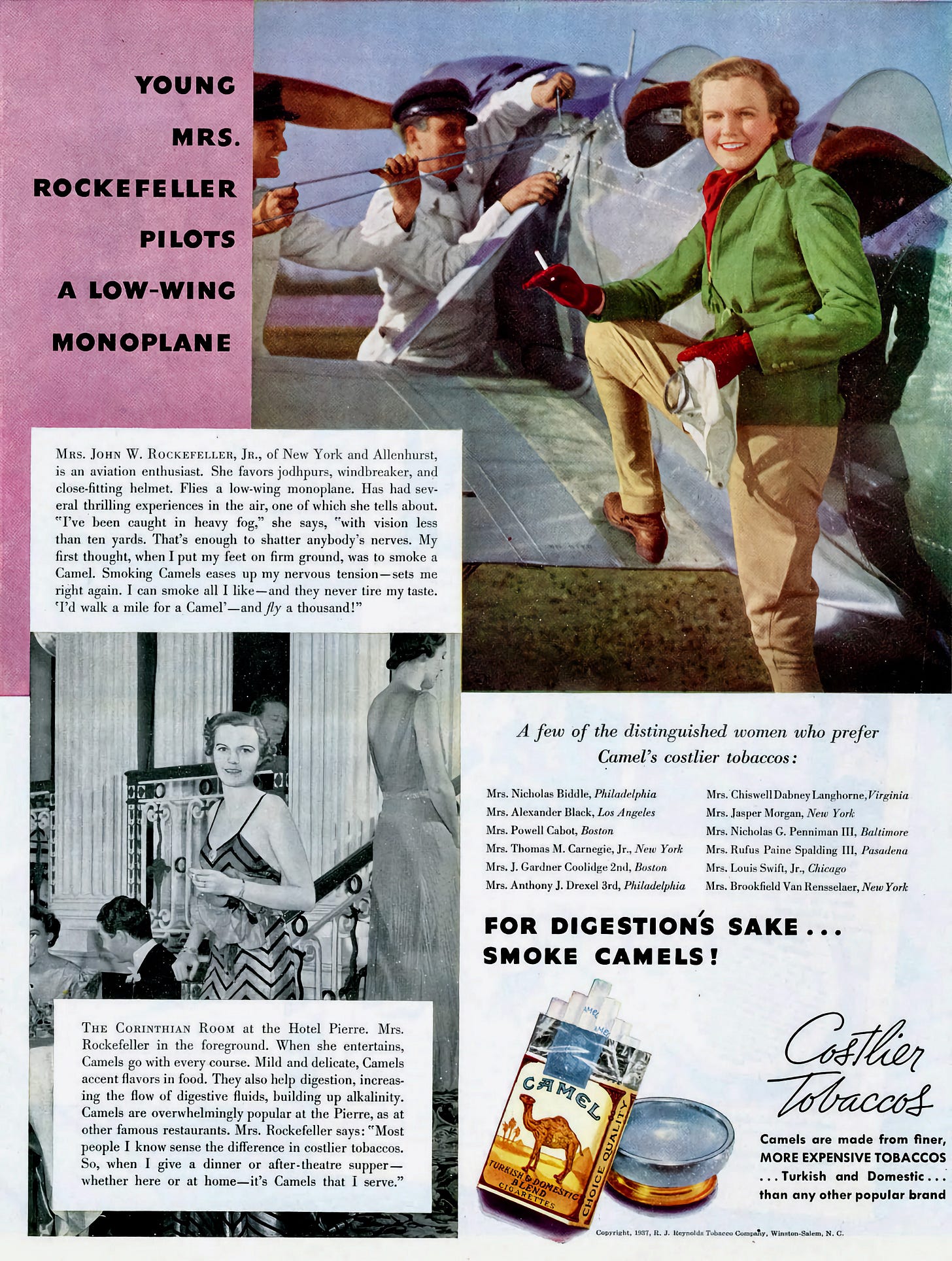
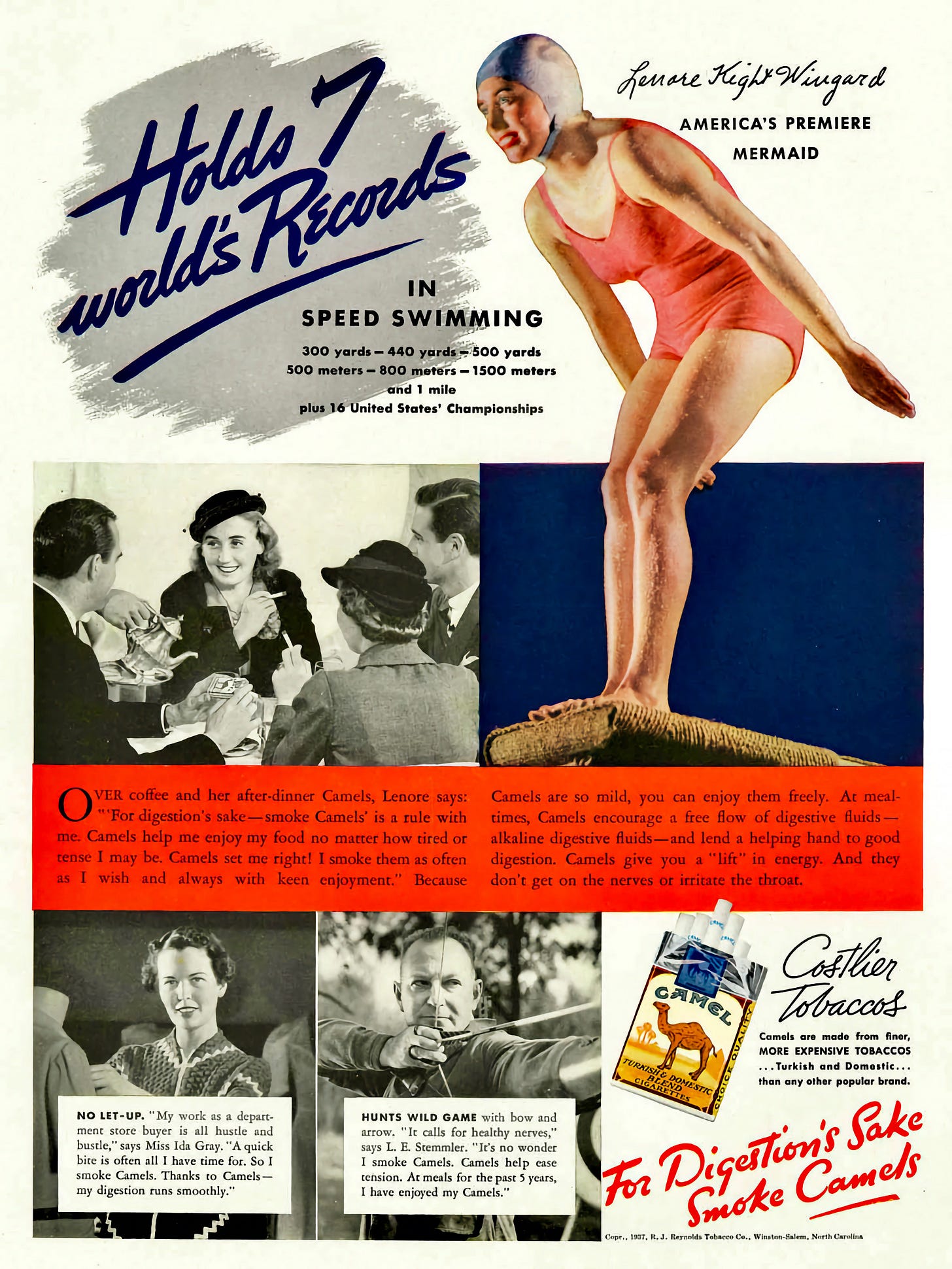


Sadly, the society we live in never really changes. Businesses, large and small, operate for the purpose of returning profits to owners and investors. And today ever-greater profit is demanded and extracted by the owning class. Believe product praise and claims of corporate beneficence (pro-gay rights, climate-friendly, etc.) at your peril.
And Carbon offsets are healthy for the atmosphere.